
Cannabis Feminization: What Is It + How is it Done?
By: Ben Morris, Head Breeder at Dirty Bird Genetics
Feminized vs Regular Seeds:
Whether you are a novice or an expert grower you have probably heard of “reg” or “regular” cannabis seeds and “fem” or “feminized” cannabis seeds, and having an understanding of regular versus feminized cannabis seeds is paramount to understanding breeding and feminization. Both reg and fem seeds produce cannabis plants when germinated, but with one big difference: feminized or fem seeds have a 99% chance of producing female flowers. This fact is massively important for many cannabis cultivators who don’t have time to sex plants or have such a volume of crop growing that the genetic insurance of 99% female plants is integral to a bountiful harvest.
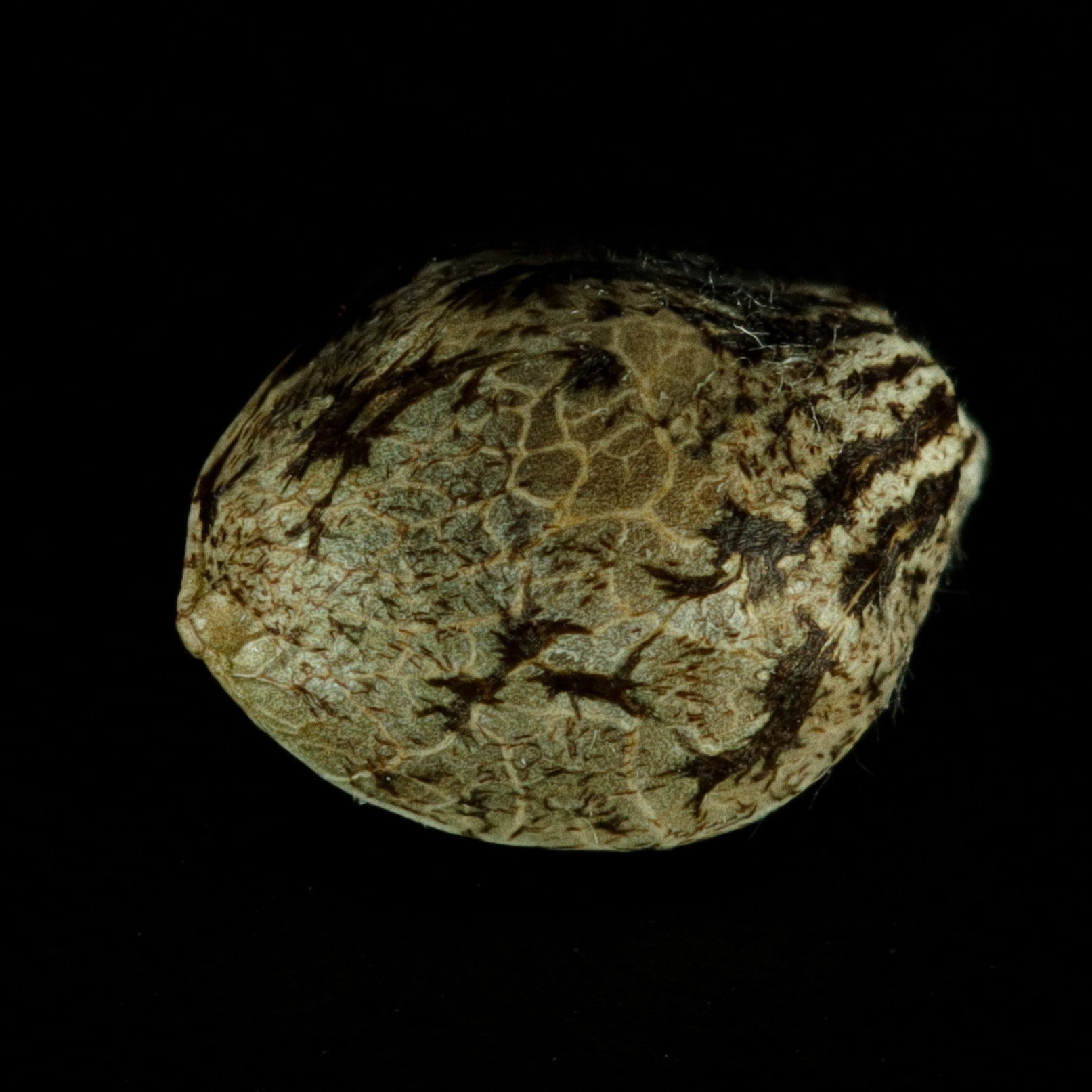
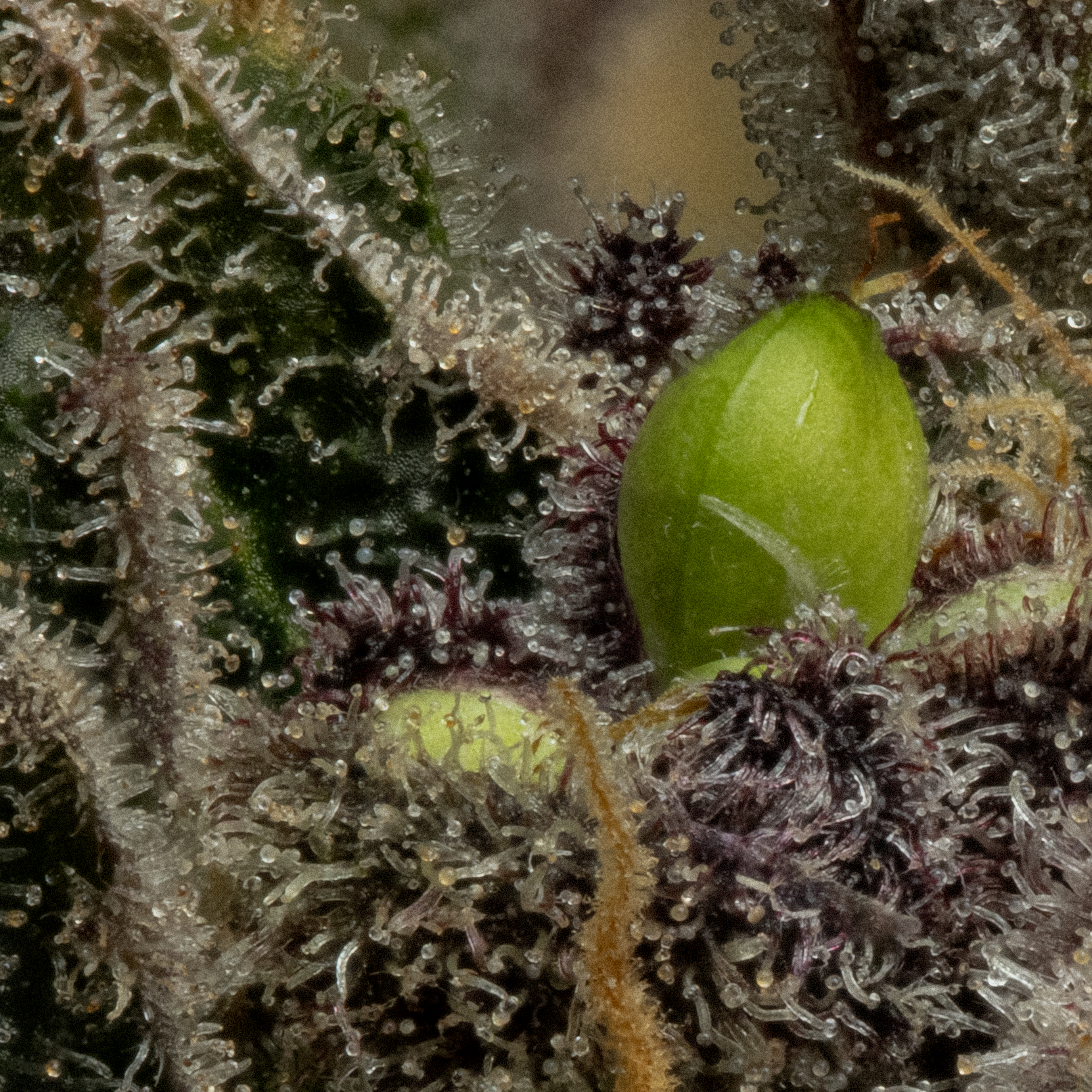
With regular seeds you have a 50/50 chance of getting a male or a female plant. This requires constant vigilance in checking your plants daily once in their flowering stage, or opting for third party lab testing of leaf material, to ensure a male doesn’t grow out anthers and release unintended pollen into the grow room, facility, or outdoor field/garden.
There are pros and cons to both feminized and regular seeds. Which kind of seed to grow is a choice growers must make with their harvest goals in mind. A person interested in breeding may want natural male plants to use in the creation of their new strain, thus with this goal in mind, reg seeds would be the best option for this grower. A person interested in maximizing their yields and filling their grow space with cannabis that will produce female flowers only may want to consider feminized seeds if they won’t have time to meticulously check their crop for males.
The Biology of Feminized vs Regular Seed Breeding:
You have probably heard about ‘X’ and ‘Y’ chromosomes at some point in your early education. These refer to ‘sex’ chromosomes that determine the plant’s biological sex. A female cannabis plant has two ‘X’ sex chromosomes (XX) whereas a male cannabis plant has one ‘X’ and one ‘Y’ chromosome (XY). The ‘X’ and ‘Y’ chromosomes don’t necessarily look like the letters and are just named that due to the ‘Y’ chromosome being discovered after the ‘X’ chromosome. The researchers who discovered this decided to use an alphabetical naming convention since ‘Y’ follows ‘X’ in those 26 letters we all know so well.
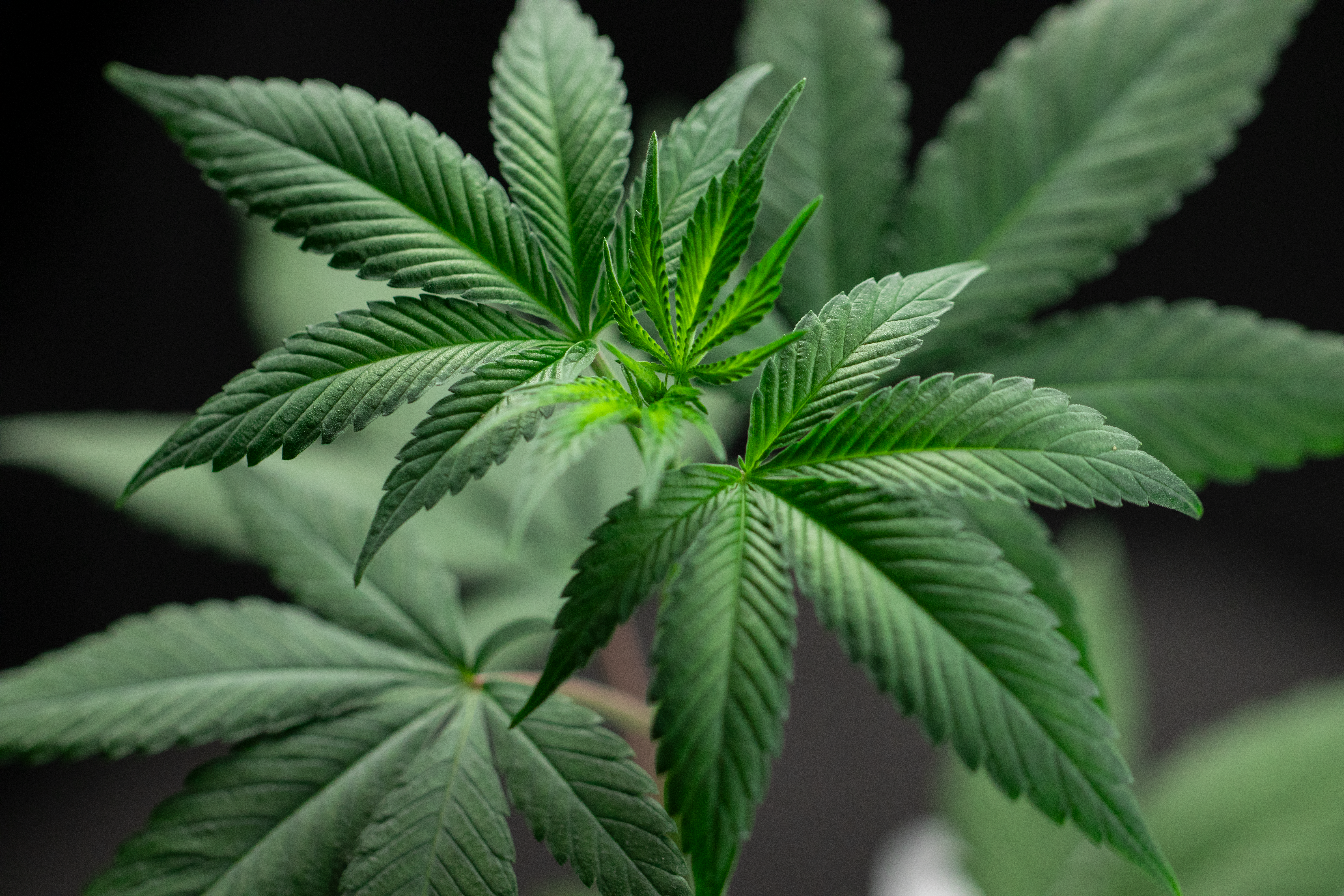
Regular Cannabis Seed Breeding
With regular cannabis, a male (XY) plant creates anthers that house and store pollen. Pollen is the genetic material passed from male flowers to female flowers that, when combined with female reproductive cells (gametes) in the ovary, creates a cannabis seed. Normally anthers open up like a small hand and release pollen which is then largely wind blown onto female (XX) plants.
Pictured to the right is an anther developing on a male Cannabis plant.
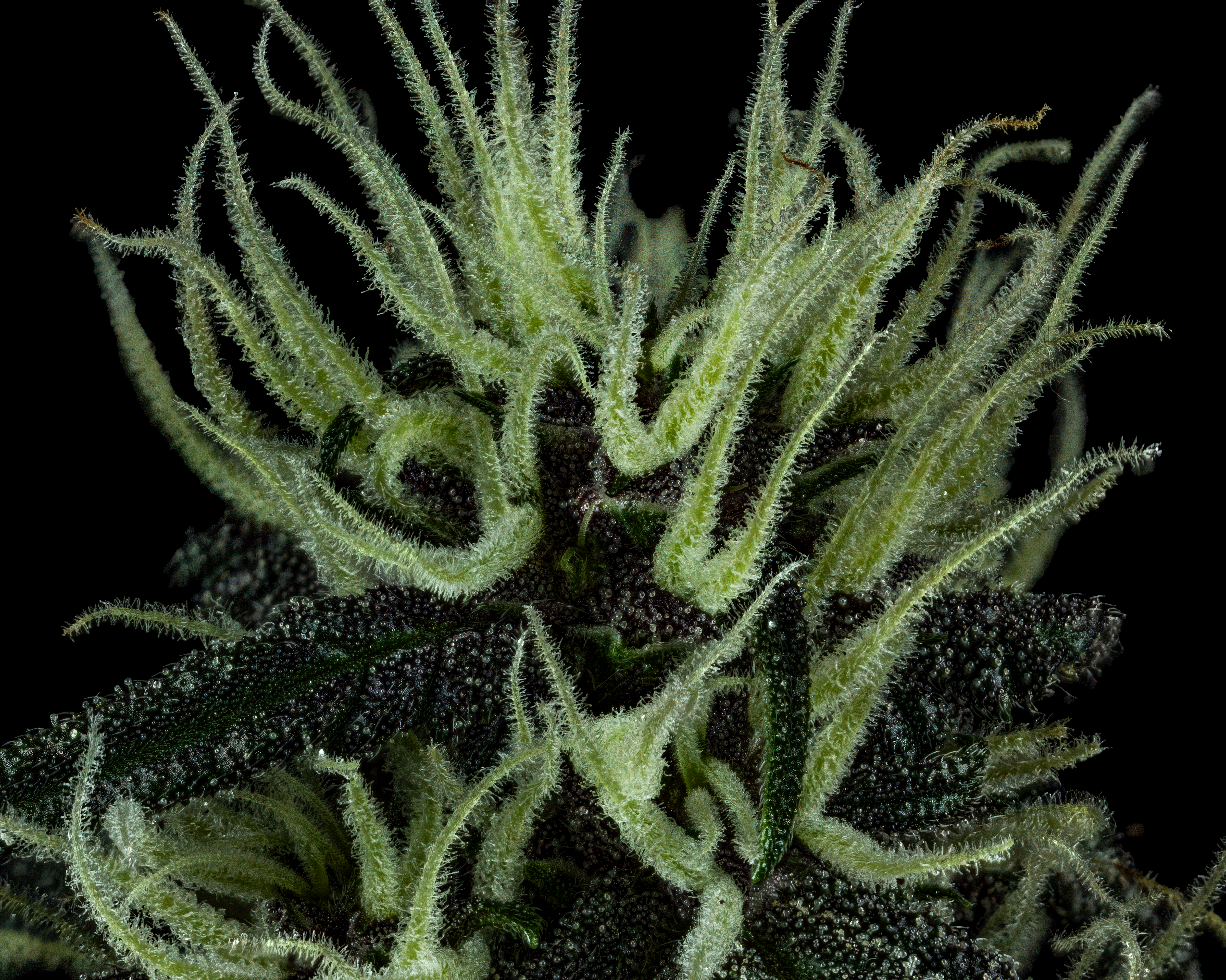
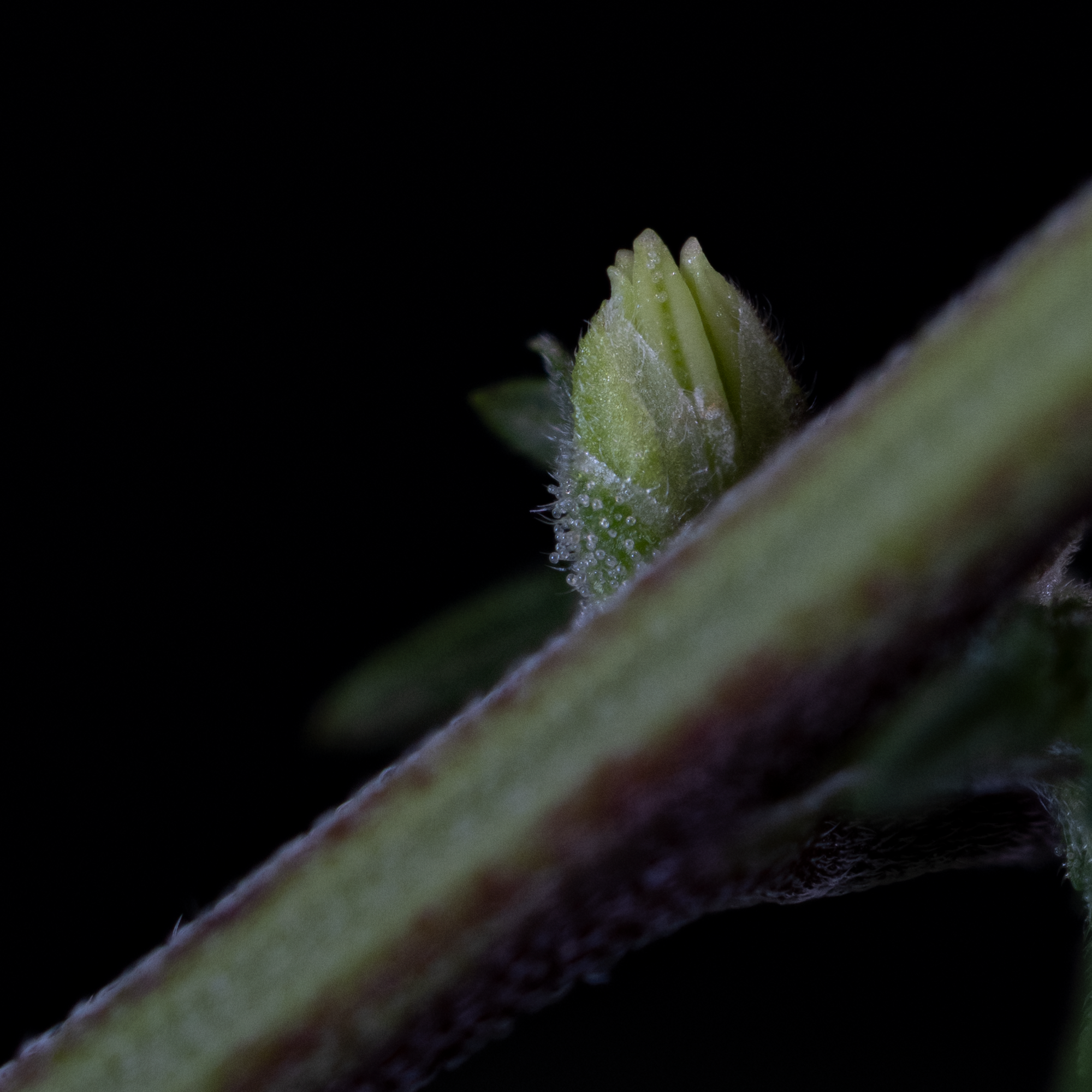
The sticky white hairs on female cannabis flowers, known as stigmas, catch this pollen on their surface. The pollen, if viable, then creates a pollen tube which penetrates the stigma and grows down into the style, a tube-like structure that connects the stigmas to the ovary, and then down into the ovary where the male and female gametes create a zygote, a fertilized egg cell. This zygote will become a seed that will be able to be harvested roughly 6-8 weeks after successful pollination (although some differences in seed maturation do exist between different cultivars of cannabis). Since male and female reproductive cells are mixed, there is a 50% chance of the resulting progeny (new seed) being either male (XY) or female (XX).
Feminized Cannabis Seed Breeding
All cannabis has the potential to create male flowers and intersex traits (male and female flowers on the same plant) due to evolutionary drives for the species’ survival. With feminized cannabis a female (XX) plant is forced to create male flowers through one of several processes. Once a biological female (XX) is forced to produce male flowers it also produces active pollen, albeit much less pollen than a biological male (XY) cannabis plant would. This pollen does not contain a ‘Y’ chromosome thus the resulting seeds will all be ‘XX’ or female with their resulting sex chromosomes. If there is no ‘Y’ chromosome to pass on, then the crop should all be female when those seeds are grown.
Intersex Traits
Intersex traits (male and female flowers) can still be expressed by feminized seed due to evolutionary survival drives at the genetic level. This is why it is critically important for anyone breeding feminized cannabis to repeatedly test their pollen donors and their pollen receivers (seed mothers) to see if those cultivars have high or low chances of ‘herming’ or developing intersex traits. If a parent plant has a high chance of herming then usually its offspring will too. If parent plants solidly show only male or female traits on one plant after repeated grows in multiple environments, then they may be good parental choices for passing on low herm rates (or the tendency to express only biological sex) to the offspring. This is obviously very valuable to growers and breeders as it ensures 99% female plants in their grow with little chance of their crop going to seed which can reduce cannabinoid and terpene content in trichomes significantly.
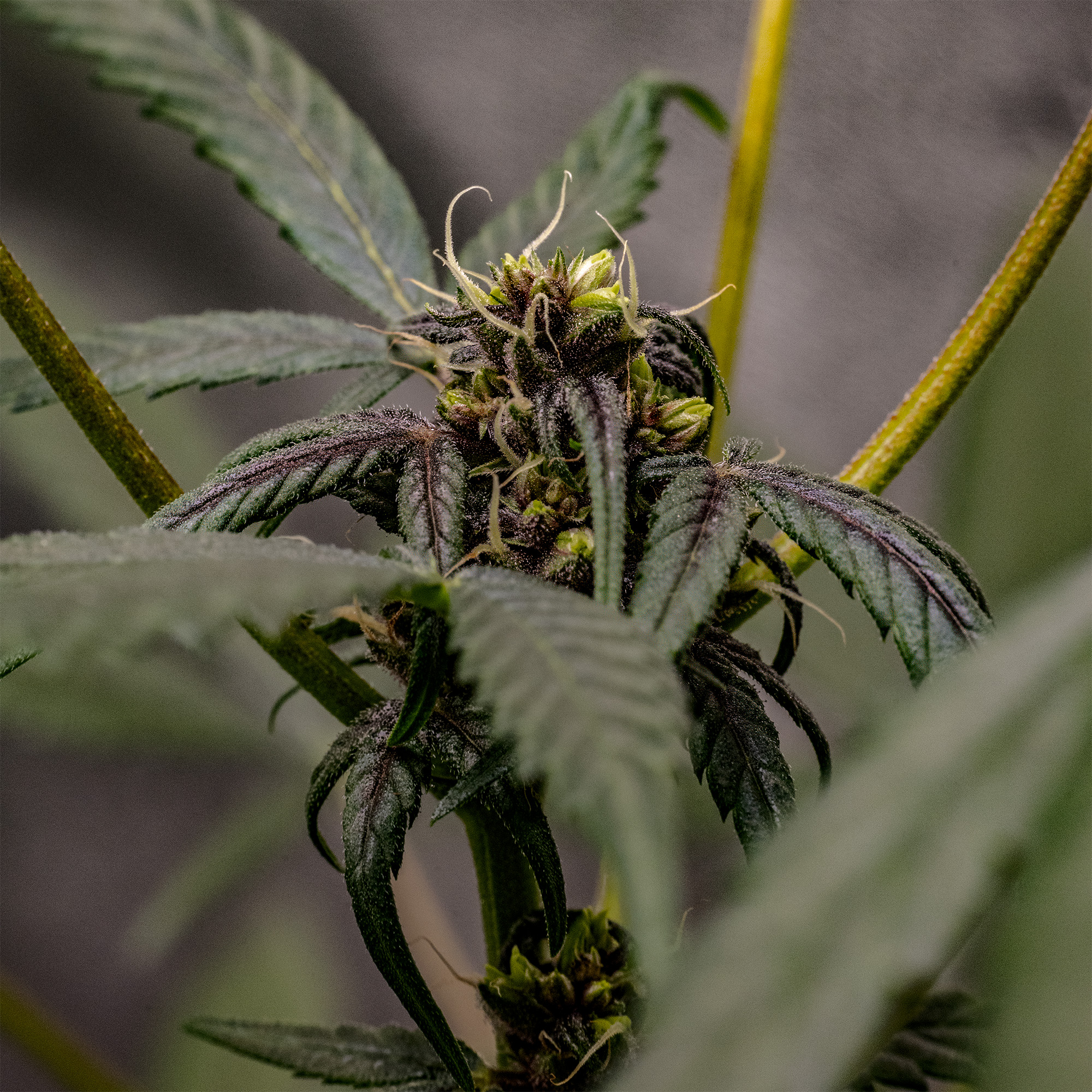
A Cannabis flower showing both male and female parts. The wispy, white hairs are the stigmas of the female sex organ (Carpel if singular, pistil if multiple carpels fused together) and the bulbous green masses are the anthers of the male sex organ (stamen).
How to ‘Feminize’ or ‘Reverse’ Female Cannabis Plants:
Rodelization Method
There are several methods for making biologically female (XX) cannabis plants express male flowers and create pollen. The oldest method is known as rodelization where the female plant is left to ‘over-ripen’ or grow far beyond its normal harvest date. This stress can lead the plant to expressing intersex traits in order to produce some seed to keep its genetic line going. Sometimes severe physical stress, drought stress, or overwatering stress can produce this effect. Light stress can also produce this effect if cannabis plants are exposed to light for long enough at some point during their 12 hours of darkness in the flowering stage. This method has largely been discontinued as it requires the pollen donor plant to express intersex traits rather than full male flowers, thus the tendency of the offspring to herm is greatly increased.
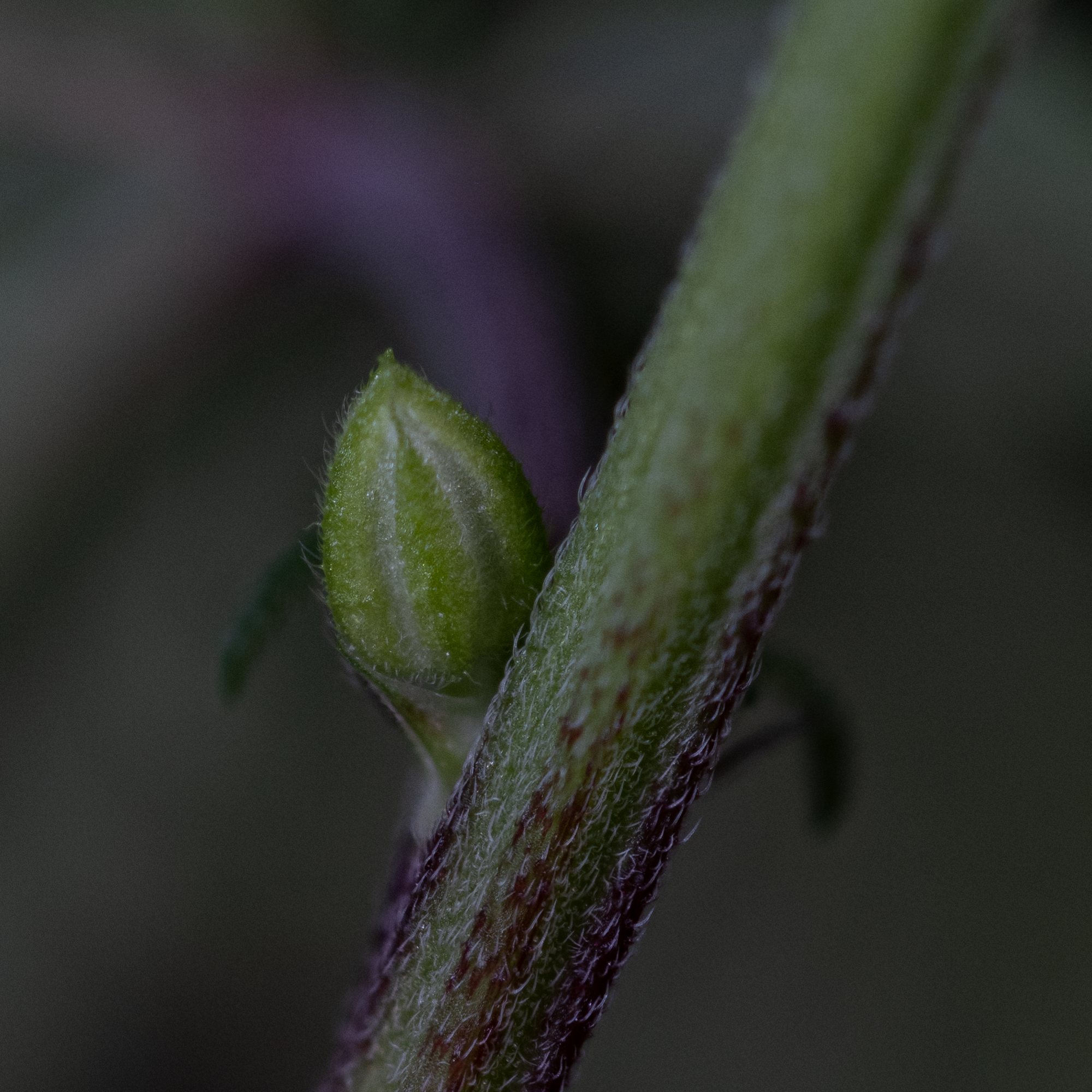
(An anther developing on the stalk of a female (XX) cannabis plant due to controlled exposure to Silver Thiosulfate sprays. This will yield pollen that will create 99.9% female seeds.)
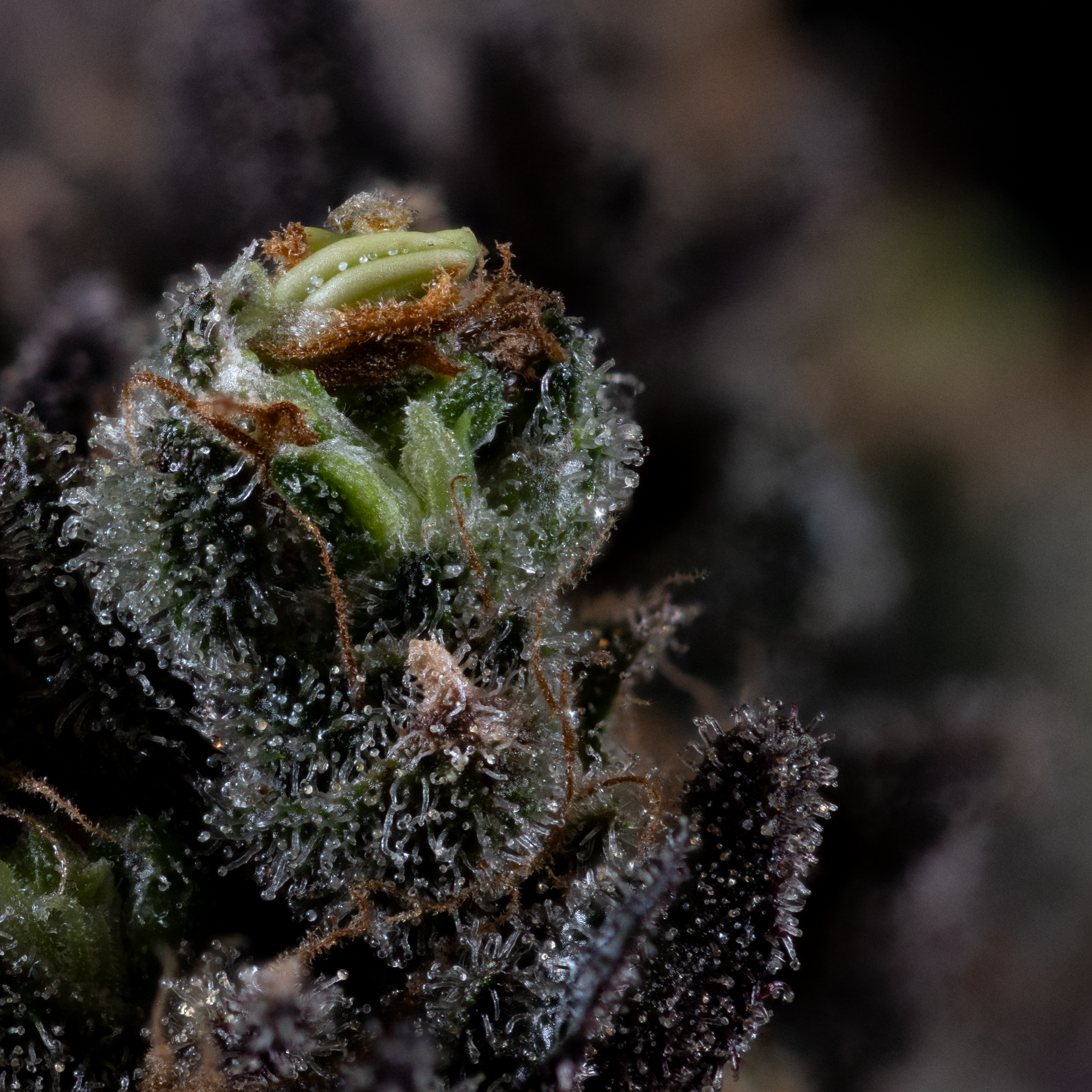
(A rodelized flower. Note the elongated, yellow protuberance.)
Silver Thiosulfate aka STS Method
There are several solutions that can be sprayed on female cannabis plants in order to create male pollen sacs through the suppression of the female plant hormone, ethylene. One of the most commonly used methods, and the method that we use here at Dirty Bird Genetics, requires a substance known as Silver Thiosulfate (Ag2S2O3). This substance can be made by combining silver nitrate and sodium thiosulfate in the right proportions to make STS spray.
Cannabis, like many living organisms, has hormones that regulate important biological processes for the plant. Ethylene is one such hormone that promotes female floral initiation in cannabis. Silver Thiosulfate suppresses the female plant hormone, ethylene, by binding to it and inhibiting its action. When this occurs for long enough (over enough days) the female plant, due to evolutionary survival mechanisms, switches to producing male flowers in order to continue the genetic line. It’s that simple.
With Silver Thiosulfate in an aqueous solution (mixed with water), the female cannabis plant to be reversed is given foliar sprays of STS solution. The spray is focused more on the flower sites forming in the vertices of the branches and nodes of the plant rather than the leaves. To initiate flowering, the spray is usually done once a day in darkness, or right before the lights in the grow space go out. This allows the spray to settle on the plant without causing leaf or shoot burn from the intense lighting. This also allows the Silver Thiosulfate to bind to the ethylene released by the plant instead of it being evaporated too quickly by the heat and intensity of the grow lights in the area.
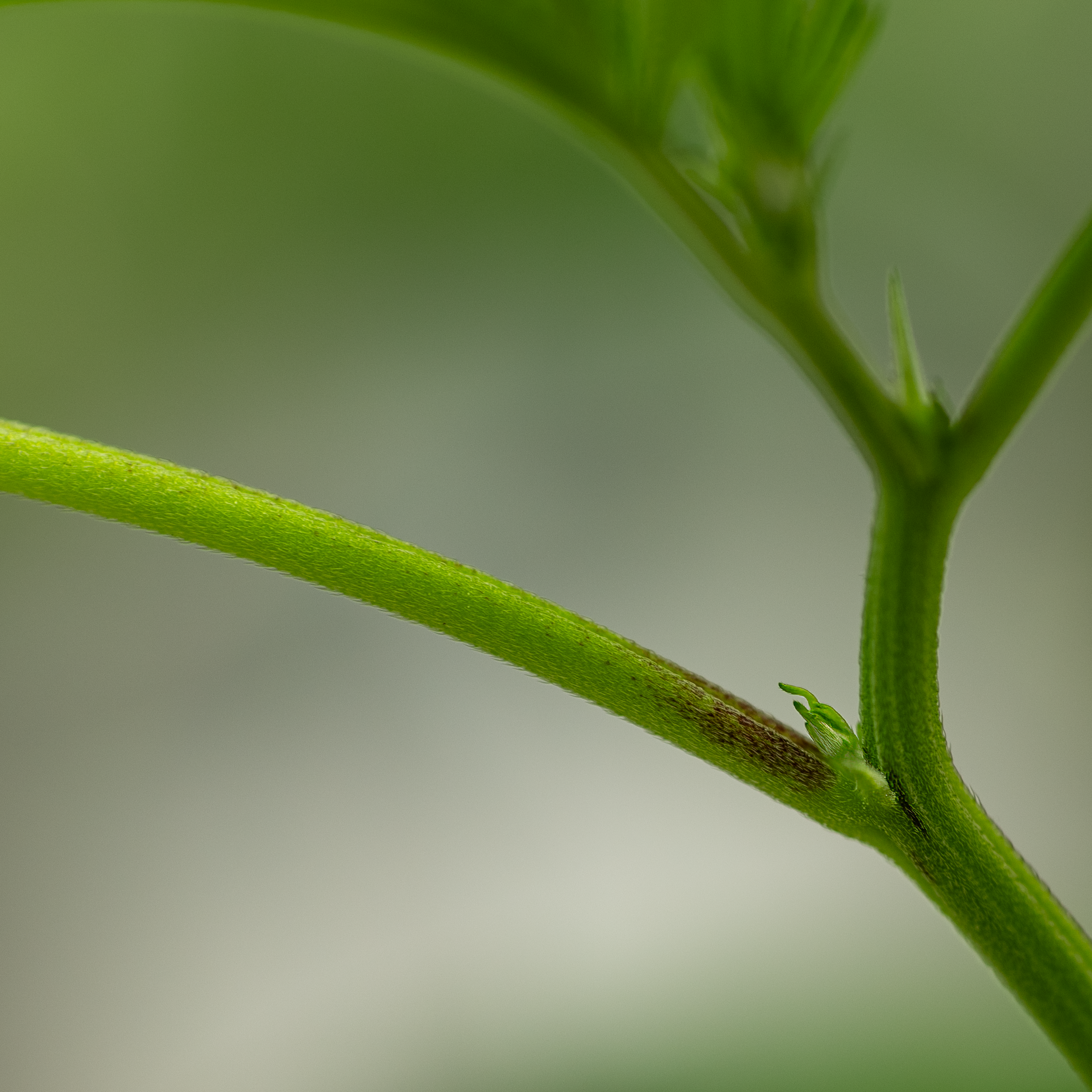
This image is showing a node where a new inflorescence will grow (the small protrusion in the vertex of the branches). If left alone this will become a female flower. If sprayed with STS this will become a male flower (anther) and will produce pollen. This is the kind of area to target when spraying STS as it will bind to the ethylene being released at these spots.
After 2-3 weeks of foliar sprays, the female plant should exhibit male flowers. Once the male flowers are growing and obviously male (little bulbous sacs without white hairs) the foliar spray is stopped to allow the plant to create the pollen it has been driven to create. After another 1-2 weeks or more of growth under flowering conditions (12/12 light schedule) pollen should be produced and ready to use.
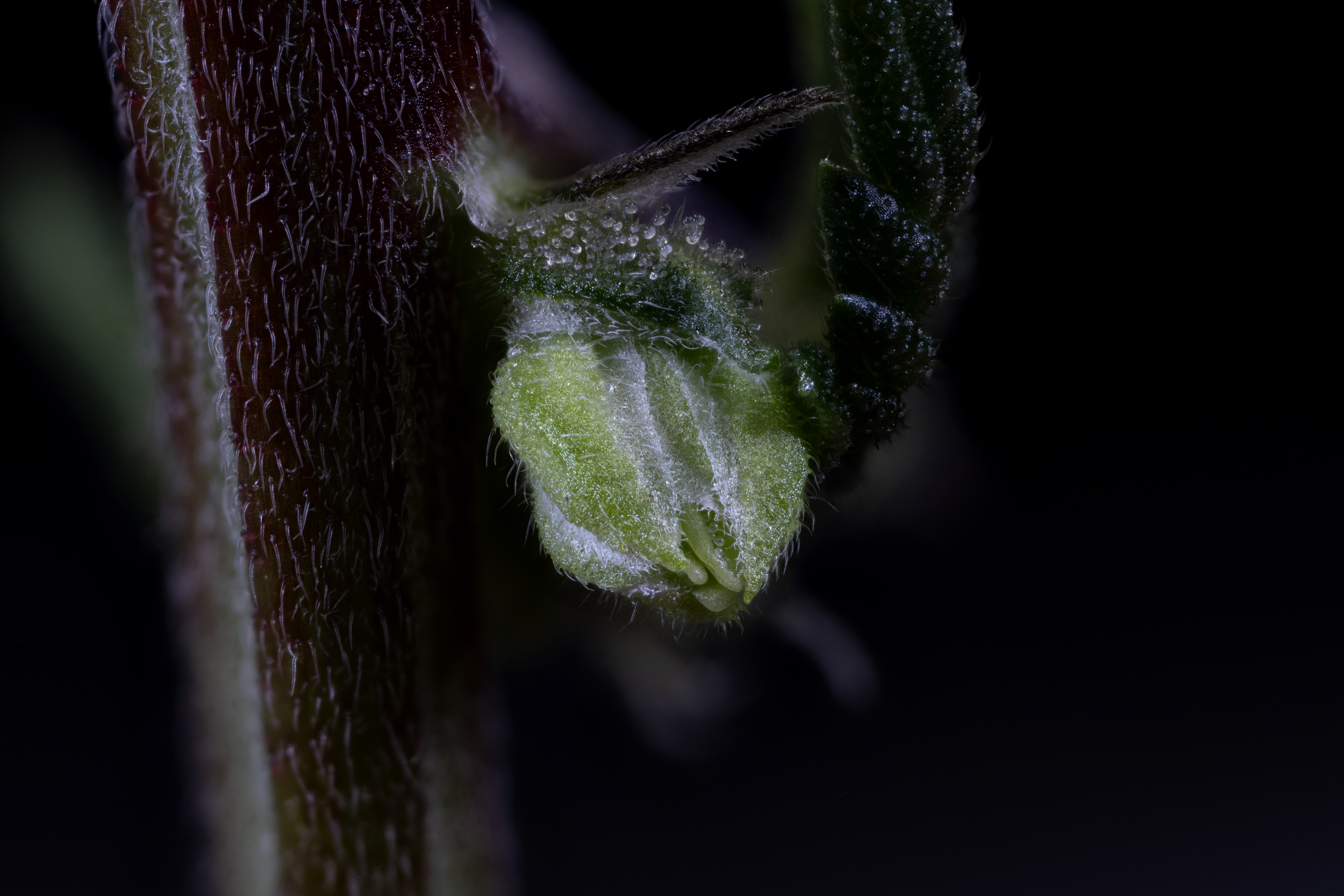
Many companies use different schedules for their foliar spray and Silver Thiosulfate dilution rates, and many of those companies also give this knowledge to the public. I do not suggest attempting this without thorough knowledge of both chemicals, and without researching the process first. Do your research before attempting anything to ensure the safety of you, other people and animals, your plants, and the environment.
Tips, Tricks, and Takeaways:
-Regular plants produce the most pollen: Feminized or reversed plants can produce a good volume of usable pollen but they often produce far less pollen than regular, biologically male (XY) plants. This does not mean they can’t be viable in breeding programs, just that more reversed females may be required to make the volume of pollen to get the seed yield a breeder or seed producer wishes to harvest.
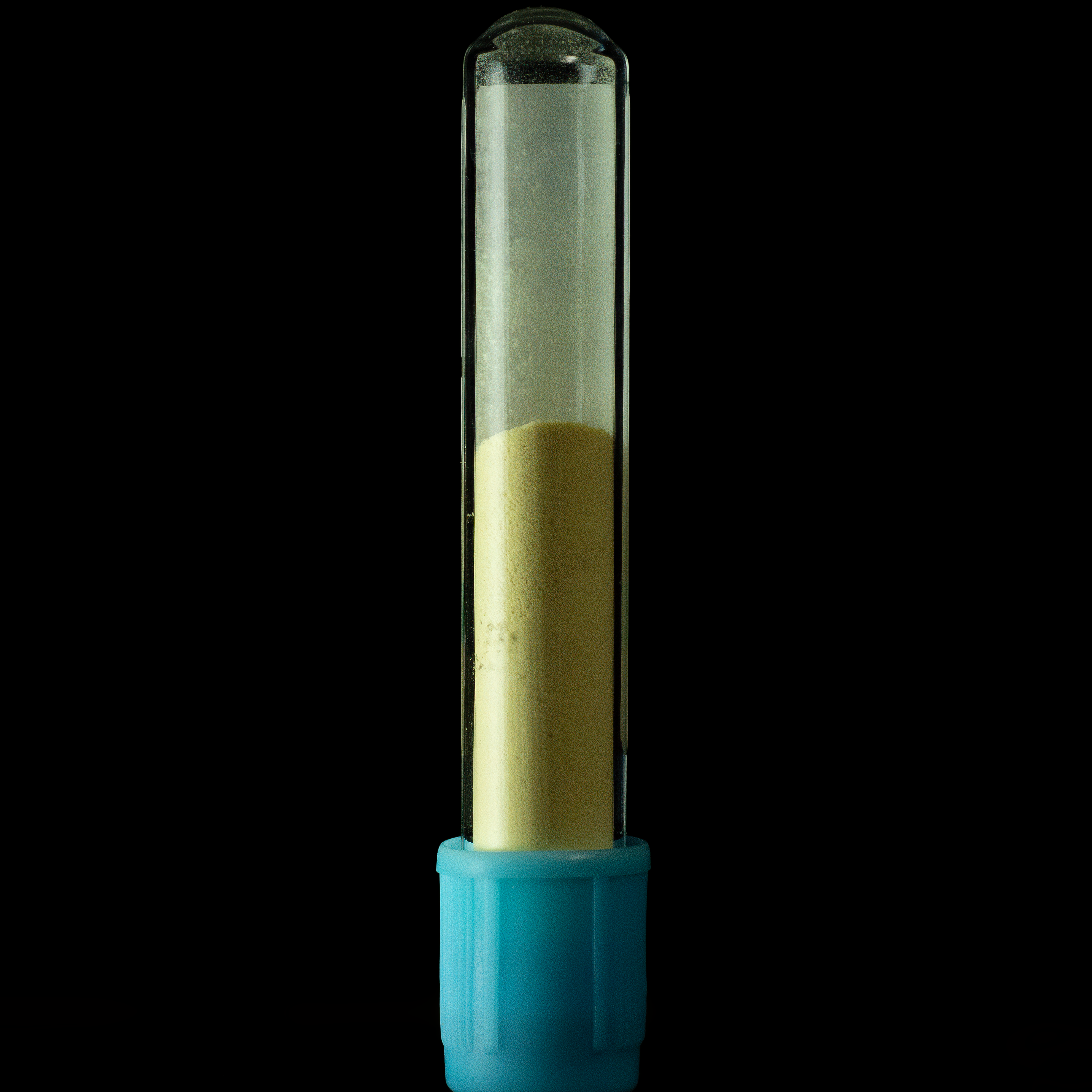
(Feminized pollen collected and stored in a vacuum tube.)
- Steer clear of intersex traits when breeding: It is advisable to breed with plants that do not show intersex traits, when untreated, to limit the chance of hermaphroditism in the resulting seed.
- Keep pollen contained: All pollen has the ability to travel great distances, so it is important to keep effective separation and isolation of different breeding projects if they occur simultaneously in separate rooms within the same location. Some breeders will stagger their pollination in different projects so only one kind of pollen is being actively produced and spread at a time. Other breeders will have entirely separate locations for their feminized vs regular breeding projects to ensure isolation. If breeding outdoors, it is critically important to use good judgment and try to limit the spread of your pollen to other grower’s fields. Some outdoor breeders will use collected pollen and ‘paint’ it onto the stigmas of their females so no open pollen release from males occurs. This limits the spread of pollen to neighboring fields/grows and is just part of being a good neighbor. Just because you wanted seed didn’t mean the grower a mile down the road did.
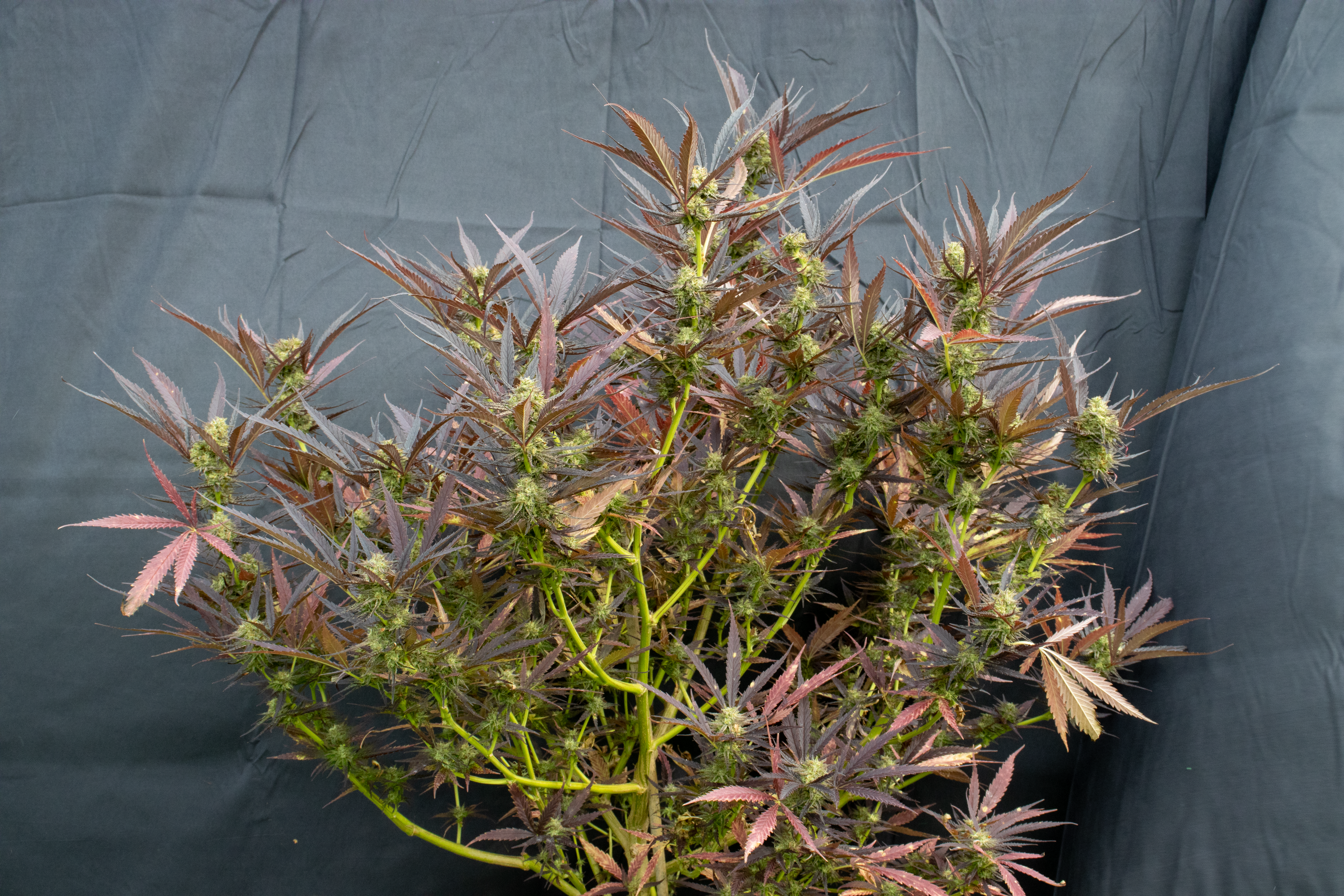
- Pollen is damaged by water: It is advisable to spray yourself down with clean water (especially your hair and clothes) from a spray bottle after completing a pollination to ensure you are not trailing viable pollen everywhere you go. The picture above is a cannabis plant grown outdoors that could be affected by improper or negligent pollen harvest/release.
Summary:
Both regular and feminized seeds will yield cannabis plants when germinated and grown. Feminized plants will have a 99% chance of being female and, if the parental selection was done appropriately/the plant is grown appropriately without undue stress, should yield only female flowers (buds). Regular seed has a 50% chance of being male or female when grown and will need to be watched to see if male traits are exhibited when entering the flowering stage. Some growers do not have the time to wait and watch for this nor do they want to invest time and money into supplies growing a plant they will just discard half way through its life. Other growers do enjoy using regular seed in order to get viable male plants to create new cultivars and some swear by anecdotally reported increased vigor and quality of regular seed over feminized.
Both regular and feminized seed can show inter-sex traits (herming) so initial selection of the parent plants is paramount in increasing the stability of the sexual expression of the offspring. It should also be noted that utilizing appropriate and effective growing techniques will decrease the chances of intersex traits being expressed.
Neither regular nor feminized seed is better for all growers as the type of seed used is largely dependent on the intentions and goals of the grower. Feminized seed is produced largely the same way regular seed is produced, using pollen to combine with female gametes in the ovary on a female flower to make a zygote and then a seed. The major difference is that the pollen donor that makes feminized seeds is a female that has been driven to express male flowers, through rodelization or chemical means, thus having no ‘Y’ chromosome to pass along to the next generation of seed when pollinating other females.
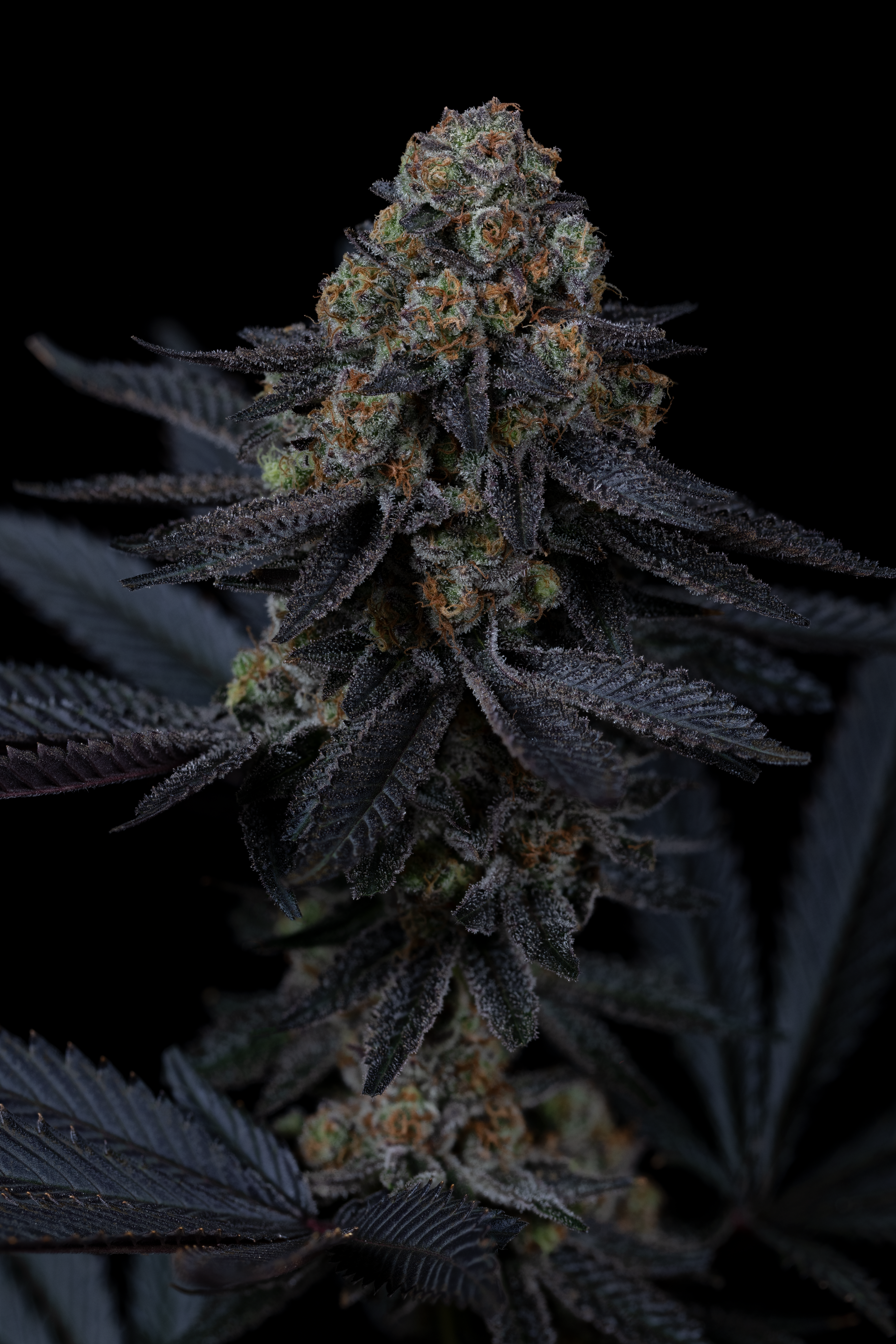
Whether you grow regular or feminized seeds is entirely up to you. Both can produce amazing cultivars that create the cannabinoids and terpenes we love as well as stunning plants that are impressive even in their vegetative stages. It’s all about a grower’s intention, harvest goals, and preferences so get to planning, do your research, and grow your crop with confidence. I hope this guide has been helpful in illustrating some of the differences between feminized and regular seed. Happy Harvest!
Key:
Regular M/F Cannabis Seed: A cannabis seed that was bred from one male parent (XY) and one female parent (XX). Regular male/female cannabis seeds have roughly a 50% chance of being female versus male.
Feminized Cannabis Seed: Feminized cannabis seeds have a 99% chance of being female as both their parents are females (XX/XX).
Reversing: By suppressing the female plant hormone, ethylene with chemical applications such as STS spray, a female plant is able to be reversed, meaning it produces male sex organs which in turn create pollin and impregnate your desired female plants.
Ethylene: The female plant hormone responsible for female floral initiation. In producing feminized seeds, ethylene is suppressed through chemical application in order to produce male sex organs on a female plant.
Rodelization: Keeping un-pollinated female plants alive way past normal harvest times and/or inducing stress in un-pollinated females in the hope that they turn hermaphrodite (i.e. exhibit male flowers/anthers that will produce pollen)
Intersex/Herm: Having both male and female parts. For cannabis this means male flowers (anthers with bulbous sac on top that contains pollen) and female flowers (the buds with white hairs or stigmas coming out) are on the same plant. Sometimes a single cannabis bud will have both male and female flowers on it which means it ‘hermed’ or is showing ‘inter-sex’ traits.
Silver Thiosulfate aka STS: A substance made by mixing silver nitrate with sodium thiosulfate in the correct proportions. It binds to the ethylene that female cannabis plants release in order to signal flowering. STS stops female flower development by arresting this ethylene. Once this occurs, the cannabis plant will begin to generate male flowers (anthers) and eventually pollen.
Stigmas: The long, sticky white hairs on female cannabis flowers. Stigmas catch pollen and transfer it down the hair into the style and then into the ovary where the male and female gametes create a zygote, which is a fertilized egg cell, eventually resulting in a seed.
Pollen: Pollen is the genetic material passed from male flowers to female flowers that, when combined with female reproductive cells (gametes) in the ovary, creates a cannabis seed
Pollen Sacs: The top of anthers, a.k.a male flowers or staminate flowers. Sacs containing pollen grains.
Anthers: Male flowers that produce pollen. They have stringy ‘filaments’ or stalks that have a bulbous sac on top that will open when mature and the environmental conditions are right and will release pollen grains.
Flowers: Part of a plant that facilitates sexual reproduction Most often the seed bearing part of a plant. For cannabis the ‘buds’ that are grown out in females are the female cannabis flowers. These are the flowers many people buy to ingest medically and recreationally due to their high cannabinoid (THCA, CBGA, etc.) content. The male cannabis plant creates anthers as its flower.
